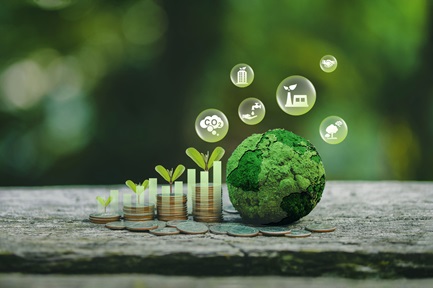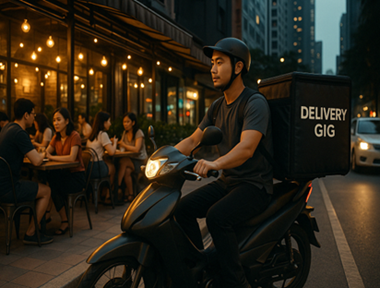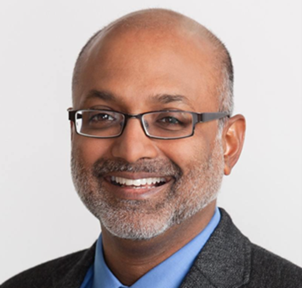Wateroam: Social Enterprise in Singapore
With the common drive to build a world without prolonged thirst, the co-founders started their social entrepreneurship journey by developing portable water filtration systems for those without access to clean water. Deployed in over 44 countries and impacting over 200,00 lives, hear from co-founder Lim Chong Tee, as they reflect on Wateroam’s existence and share brainstorming strategies to position the enterprise.
Can you recall and share any episodes growing up that made you aware how vital it is to have access to clean water?
During one of my OCIP trips in Cambodia, I came across a village that changed the way I look at the importance of clean water.
I was a volunteer teaching English and Maths in the village, and it was a hot and sweltering day. While I was quenching my thirst during a class break, I remembered getting worried and frustrated that I was running short of bottled mineral water. As I was contemplating how difficult it was to find clean drinkable water in the village, I saw a child drinking directly from a green swampy well just outside the classroom.
I could vividly remember that worms were skittering across the surface of the water and there was a foul odour that you could smell from a few feet away. After returning to class, I started noticing that there were so many absentees in class. Upon further probing from the local teachers and school infirmary, I learnt that there were so many chronic diarrhea and dysentery cases in school that were caused by the lack of safe drinking water, sanitary systems, and hygiene practices in school. Even though I knew water has been an issue, it is difficult to truly comprehend how children are still plagued by the lack of safe drinking water in the 21st century. This incident caused me to have an epiphany about how real the problem of water accessibility is and made me want to really do something about it.
I took up environmental engineering in university and met David and Vincent during a PUB Accelerator programme. David is a business student who wanted to put his enterprising skills and knowledge for the betterment of people. Vincent grew up in Indonesia and have seen many communities without proper access to clean water. Having a shared passion, it quickly brought us together and we started brainstorming on a water filtration solution that could bring safe and clean drinking water to less privileged communities.
How did the team envision the first steps to inventing the early filtration machines?
We started by studying the problem. Currently, about 2.2 billion people in the world lack access to clean drinking water, which is close to 1 in 3 in the world. Out of these affected personnel, majority of them reside in rural and informal settlements. After doing tons of research, we narrowed down a few key areas that are making it so difficult for existing solutions to tackle the problems.
The first thing we realised was existing solutions such as centralised pipeline water treatment plants were too costly and time-consuming for communities living in wide-spread areas. With high capital costs (infrastructural projects are typically in the hundreds of millions), long installation periods coupled with issues of bureaucracy and sometimes corruption, it is extremely challenging for large, centralised water treatment plants to be installed for small villages and refugee camps. Other solutions such as traditional water filters have drawbacks such as the type of water it could filter, and the reliance of bottled water could be very expensive over time.
A second major issue is global warming. With climate change, the frequency of extreme weather events is increasing with occurrences of disasters such as flash floods and drought a lot less predictable than decades before. Extreme weather events often cause existing infrastructure to break down and cause major disruptions to the logistic chains. This leads to internally displaced personnel not being able to obtain clean water quickly, which in turn leads to water-borne illnesses when people are forced to drink untreated water.
With these problems in mind, we lay down 3 key design principles when designing our filter.
Our filter needs to be safe, simple, and swift. Safety is of utmost importance because we want our users to be able to enjoy potable water without having to worry about contracting diarrhea from drinking fecally contaminated water sources. Next, we focus on building solutions with simplicity in mind. How intuitive a solution is, is of extreme importance. The principle of a human-centric design is key in making sure that our users can set-up and operate the filter hassle free. Lastly, to answer the call of first responders, our solution needs to be swift to deploy during a disaster. Ensuring that our solution is light, portable, and mobile is key to answering those challenges.
We used the “Lean” design methodology to build our MVP (minimum viable product) in 2014 and multiple product iterations later, we were able to come up with a working prototype for our first community filter in 2017.
Did your backgrounds and training during your undergraduate university time helped you in any way to get the project off the ground, and running subsequently? How has the university education and training that you received contributed to your operations, efforts, and success today?
My background in engineering has helped me in the initial phase of the business, especially when it comes to the technological and scientific aspect of building water filters. The courses I have taken in civil and environmental engineering laid the foundation in understanding how municipal systems work at large and general electives in business and marketing allow me to have a better appreciation on how to grow and nurture an enterprise. David’s background in business management and finance helps us set up a strong business model and Vincent’s hands-on approach towards engineering and innovation help us to build successive prototypes one after another.
We were also fortunate to have a space at the incubator during our early years to work together and meet aspiring start-up co-founders who are also working on very interesting ideas themselves. On top of that, being part of the Block 71 and Hangar Community allows us to connect with a network of innovators, entrepreneurs, and business people.
Besides the setback on the earlier filtration machines, can you recall and share any other major setbacks that almost derailed your plans or intentions?
It is never easy when you want to create something new and different. In my perspective, a big part of the process of innovation is about balancing creativity, functionality, and failures. Hardware engineering is a resource-intensive and time-consuming process. As much as we do our best to learn from industry experts, things don’t always go our way. During our early days, we designed a “portable” filter that wasn’t exactly that “portable”. One of our first major prototypes was a water filter that was a skid-portable filter. We thought that as long as we could move it in a small car, it would be “transportable”. While our initial prototype water filter worked wonders in the village (the system was able to turn contaminated river water into drinking water!), one of our team-mates suffered a slip-disc injury moving the filter up and down the transporting vehicle. After the incident, it made us go back to the drawing boards to rethink about what a “portable” water filter should be like. We knocked on doors, conducted interviews with villagers, consulted NGO partners and worked with all of them to improve our system. Today, we have a water filter that is less than 3kg, completely backpackable by a child, fits comfortably in a luggage and is capable of producing clean water for an entire village of 100 people for 2 years.
Can you share or list some specific directions or products/services that you are exploring along the lines of providing sustainable solutions to areas and communities who continue to need a supply of potable water?
We are currently working on a new and improved version of our ROAMfilter Plus, or a Mark 2 version of our community filter. Apart from retaining the key principles of the filter (Safe, Simple & Swift), we are improving the user experience of the filter by strengthening the durability of the product and making the upgrades for the ease of maintenance and operation of the filter.
Apart from addressing solutions in the rural areas, we have also launched a new product for home and residential use in developing regions where tap water is not directly drinkable. The Homefilter Faucet removes bacteria, viruses, protozoa, organics and odour in the water, making sure that users are drinking right from the tap without any worries. For our new launch, we are also adopting a Buy 1, Gift 1 model, where part of the proceeds from every Homefilter sale would directly provide a child living in a marginalised community with clean drinking water.
What additional tools and frameworks would you need to navigate changing social and economic conditions worldwide? How should you position Wateroam to succeed in post-pandemic markets?
It is not just the post-pandemic situation that worries me. The 2022 IPCC released a report that warned us that the world is hitting the limits of a climate change adaptation. We live in a time where climate-induced disasters such as floods and droughts are increasing with frequency, severity, and unpredictability. A pandemic with an ever-evolving coronavirus is still thwarting global public health systems, travel, and the general economy. On top of that, protracted human conflicts such as the Israel-Palestine conflict, the Myanmar military coup and the recent Ukraine-Russian war have led to a growing refugee population in many parts of the world. In the midst of all this, the food-water-energy nexus remains the most crucial and essential for the populations affected by such atrocities. As with any crisis, it is always the communities with poor utilities and crippled infrastructure that would struggle to gain access to safe and clean water sources.
However, we believe that in the midst of all these bad news lies a silver lining. Despite not being able to reach out to our partners directly, we continue working with communities via our impact centre and imparting essential WASH knowledge through our digital training tools, webinars and workshops for our local water champions and NGOs partners.
Leveraging on people, private and public networks, we continue focusing on building strong ties with our international partners and establishing strong distribution channels in regions which are most affected by such challenges. We alone will not be able to quell the problems in its entirety. But with continued innovation and close working relationships with our partners, Wateroam would be able continue serving the needs of the poor and build a better world for tomorrow.







